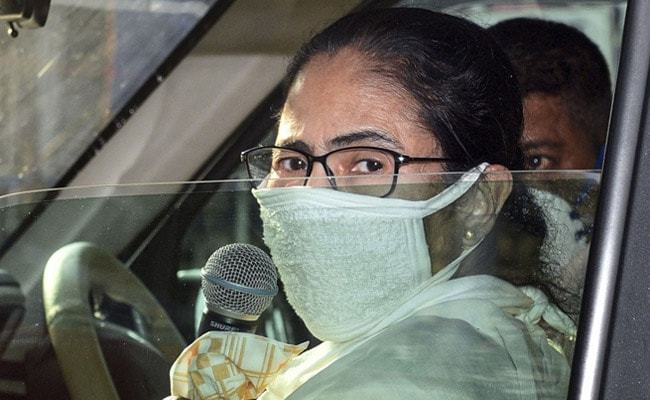
COVID-19: Danger signs in Bengal that Mamata’s keen eyes fail to notice
The sudden surge has put a serious question mark on the state’s pandemic containment strategy, micromanaged by the chief minister, at a time when her government is at loggerheads with the Centre over the handling of the situation.

On Wednesday (April 22) as Mamata Banerjee, for the second day in a row, went around Kolkata urging people over microphone to stay indoors, 26 new COVID-19 cases were reported in the state. Only a day earlier, 29 positive cases were added to the list of affected patients.
The sudden surge has put a serious question mark on the state’s pandemic containment strategy, micromanaged by the chief minister, at a time when her government is at loggerheads with the Centre over the handling of the situation.
Two inter-ministerial central teams (IMCTs), each group headed by an additional secretary-level officer, are in the state since Monday (April 20) to have an on-the-ground assessment of the seven districts where the situation is allegedly serious.
The total number of active positive cases on Wednesday (April 22), as per the state government’s figure, shot up to 300 from 274 cases on Tuesday (April 21). The Union health ministry, however, put the total COVID-19 cases in the state at 423 (as of Wednesday). Of the 423, the ministry said 73 patients have been discharged and 14 have died. As per these statistics, the total number of active cases should be 335 i.e. 35 more than the number released by the West Bengal health department.
Related news: Bengal does a balancing act to deal with COVID amid plunging revenues
If the Centre’s figure is considered, West Bengal is the 13th most-affected state in the country. The chief minister and other Trinamool Congress leaders have therefore questioned the Centre’s motive behind air-dashing inter-ministerial central teams (IMCT) to the state.
Doubling of cases
Sources in the state’s medical fraternity, however, pointed out that two alarming trends have been noticed in the state, which should be a matter of great concern. The rate of doubling of cases in the state is six days, which is faster than the national average of 7.5 days. Until April 17, a month after the first positive case was detected in West Bengal, the number of active COVID-19 patients was 162, which means in the last five days at least 138 new cases were added.
States like Delhi, Rajasthan, Tamil Nadu, and Kerala may have more positive cases than Bengal, but the doubling rate in these states is slower, indicating that the situation is getting better. Whereas, in Bengal it’s getting worse.
Another area of concern is the hospitals and health centres getting hit by the virus with alarming frequency. Already around 24 doctors and health workers have tested positive, prompting eight doctors’ organisations, including the state unit of the Indian Medical Association (IMA), to write to the chief minister seeking safety of the frontline workers.
The spurt in new cases is attributed to laxity in lockdown norms in several parts of the state, lapses in adherence of safety norms in hospitals and belated increase in surveillance.
Until April 14, only 3,081 samples were tested for COVID-19. The number jumped to 7,037 on April 22, more than a twofold increase in eight days. Interestingly, until April 1 only 659 tests were carried out in the state, which is less than the 855 samples tested in the past one day.
Lopsided enforcement of lockdown during the first phase of the restrictions that ended on April 15 could be another reason for the recent spike in the positive cases, health department sources say. Until recently, most vegetable and fish markets in the state witnessed crowding, drawing the ire of the central government.
Hazardous situation of hospitals
More than anything else, sources in the department said they were concerned by the way hospitals are becoming hazardous. So far at least nine health-care institutions in the state, including four premier medical colleges and hospitals, faced complete or partial closure for disinfection after patients admitted in these facilities with other complications later tested positive for COVID-19.
Junior doctors in particular expressed dissatisfaction over the safety measures being adopted in the hospitals. More than 200 junior doctors at the Calcutta Medical College (CMC) Hospital, the oldest medical college in Asia, in an open letter demanded mass testing of all frontline medical teams and proper isolation facilities. They raised the safety concern after at least seven doctors working in the institution tested positive for coronavirus.
The doctors say, due to lack of safety measures, the health facilities in the state are turning into COVID-19 risk zones.
Related news: How slipshod handling of cases is upping Bengal’s COVID-19 tally
The visiting central team also took notice of the health professionals contacting the virus. In a letter to state’s chief secretary Rajiva Sinha it sought to know what protective measures have been taken in this regard.
The team is assessing the situation in Kolkata, Howrah, North 24 Parganas and East Midnapore districts, considered to be in the red zone, along with Darjeeling, Kalimpong and Jalpaiguri districts. It is not clear what yardstick was adopted for the inclusion of the last three districts. Darjeeling and Kalimpong were declared as zero COVID-19 case districts by the health ministry only a few days ago.

